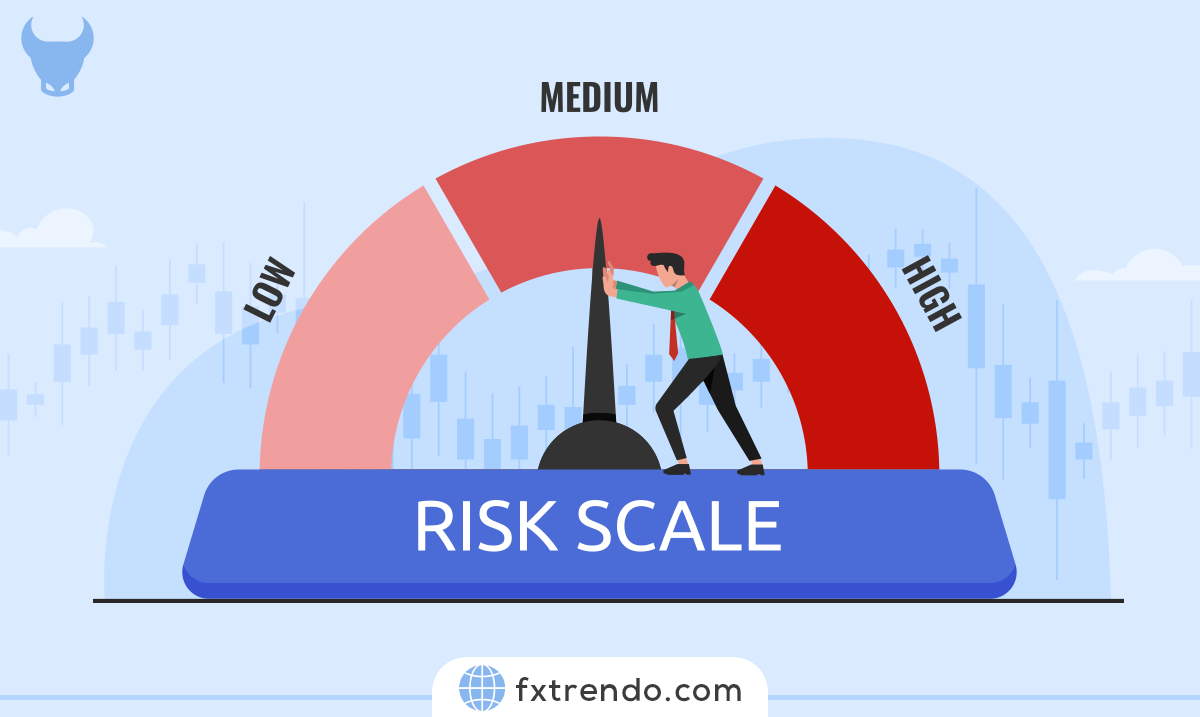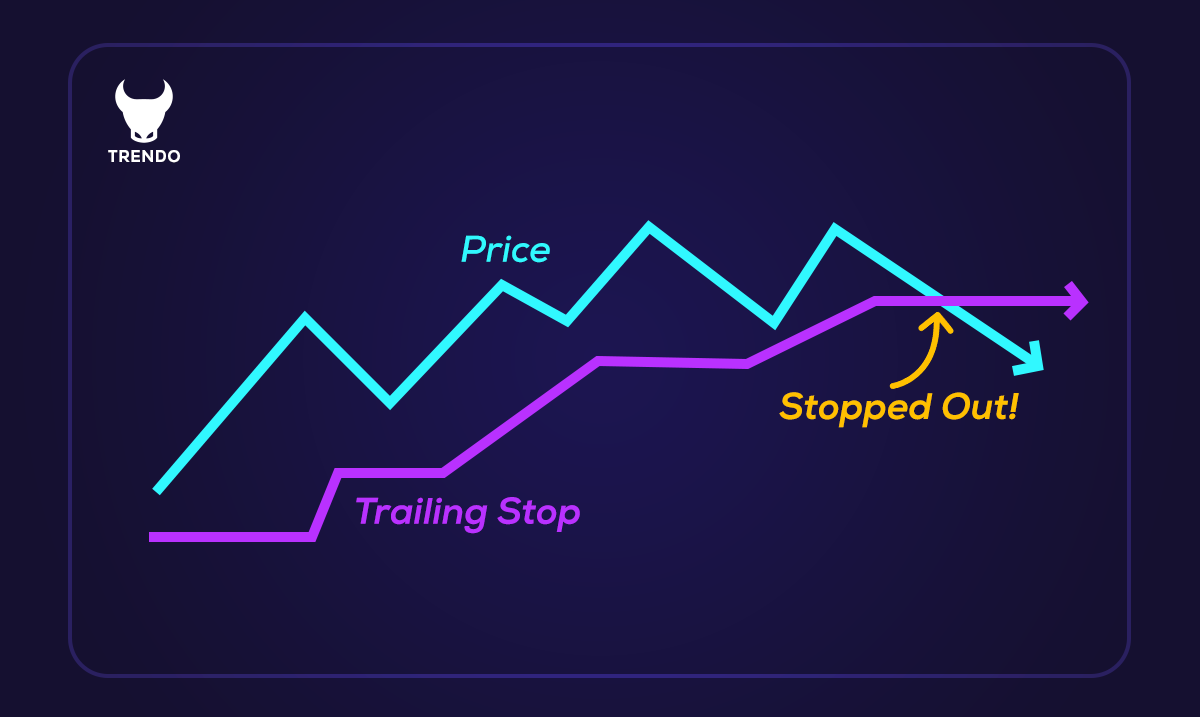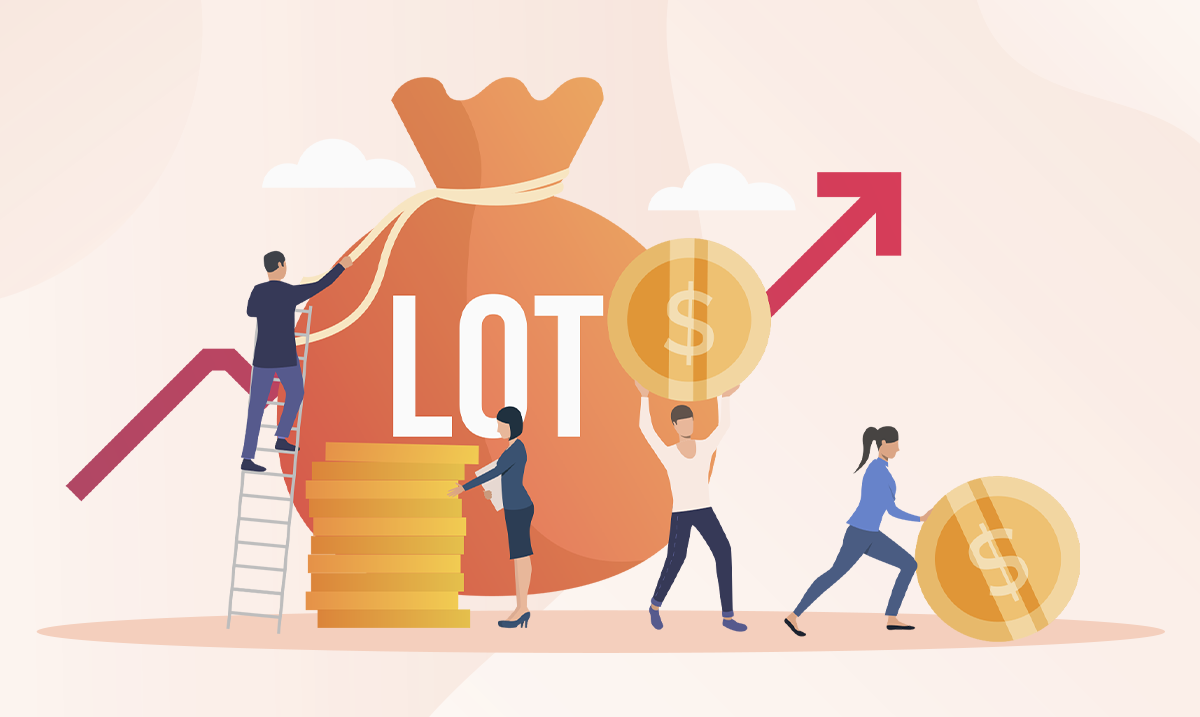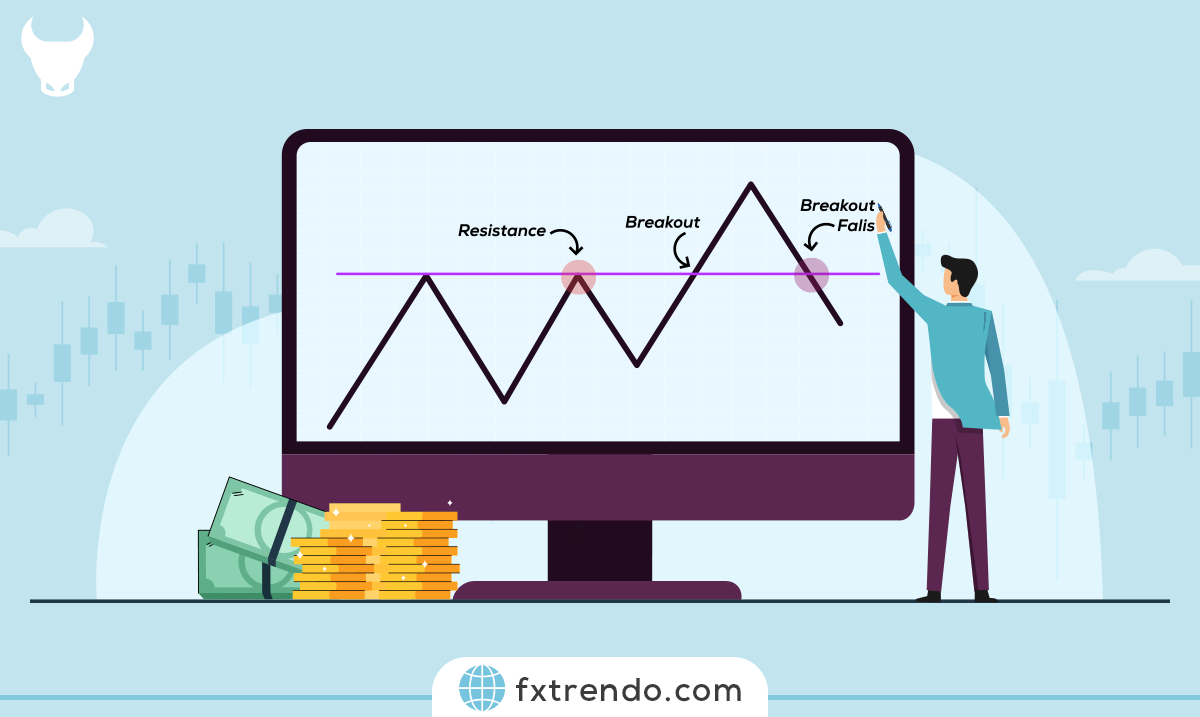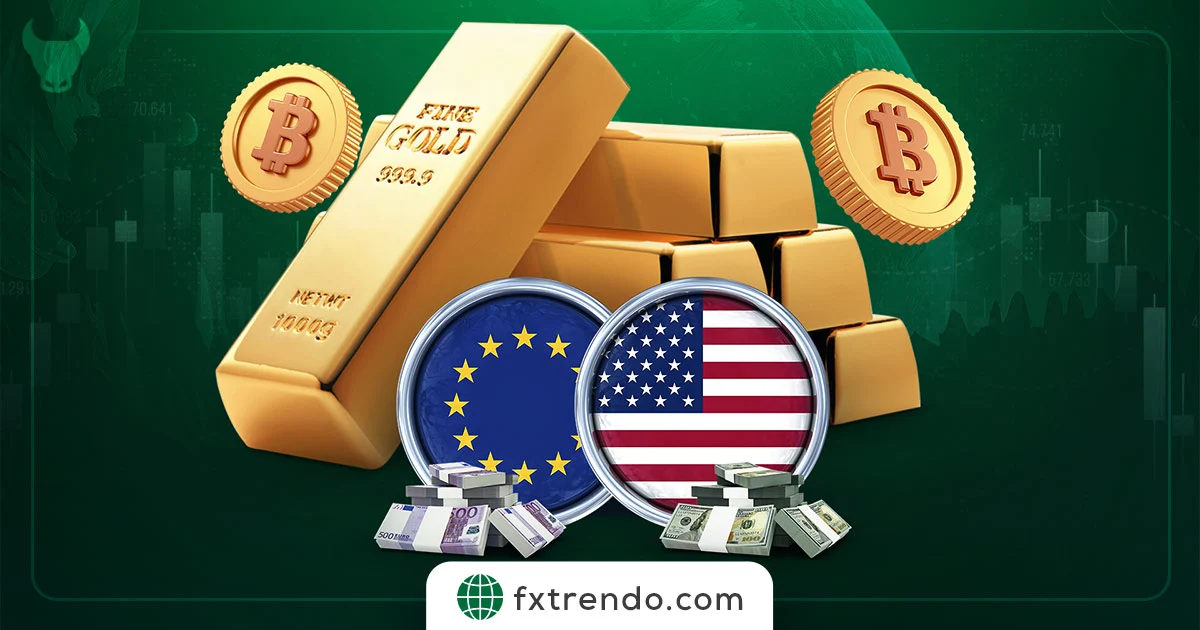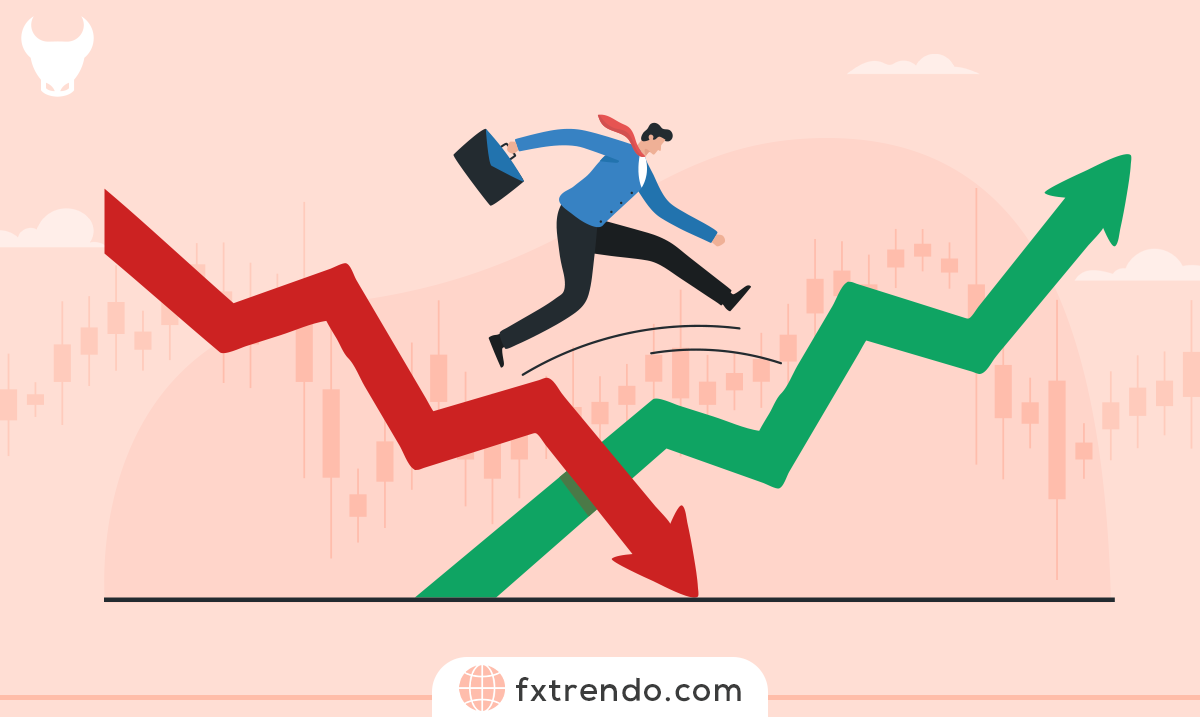We’ll explore proven techniques, from stop-loss orders to hedging, and how they can be applied to trade with peace of mind. Whether you’re starting out or refining your approach, understanding risk-free trading is a step towards more secure investments.
Dive in to discover how to trade smartly, minimize risks, and potentially increase your returns.
What is Risk in Trading?
When we talk about risk in trading, we’re referring to the possibility of an investment’s actual return differing from the expected return. This includes the potential of losing some, or even all, of the original investment. In simpler terms, it’s the chance that the outcomes of your trades will not unfold as you hope.
Risk is an inherent part of trading; it’s the shadow to the light of opportunity. Every trade carries with it a certain level of uncertainty, and this uncertainty is what we call risk. It’s like planting a seed without knowing what the weather will be like—it could flourish, or it could struggle.
Types of Trading Risks
Market Risk
Market risk, also known as systemic risk, is the unpredictable movement of prices in financial markets. It’s like navigating a roller coaster—the ups and downs can catch you off guard. Factors such as economic events, geopolitical tensions, and unexpected news can cause sudden price fluctuations. Traders face the risk that their positions may move against them, resulting in losses.
Liquidity Risk
Liquidity risk is akin to being stuck in a traffic jam during an emergency. It refers to the difficulty of entering or exiting trades due to insufficient market liquidity. When a market lacks enough buyers or sellers, executing orders becomes challenging. Traders may struggle to buy or sell assets at desired prices, leading to potential losses.
Operational Risk
Think of operational risk as the gremlins in the machinery. It encompasses errors, technical glitches, and human blunders. From accidental keystrokes to server crashes, operational risks can disrupt trading activities. Traders need robust systems, backup plans, and vigilance to mitigate these risks.
What is Risk Free Trading?
Risk-free trading is a concept that sounds almost too good to be true: the ability to trade without any fear of losing money. But let’s set the record straight—it’s not about completely eliminating risk (because that’s impossible), but rather about minimizing risk to the greatest extent possible.
First, let’s dispel the myth that risk-free trading means zero risk. In reality, every investment involves some level of risk. Even the safest options—like government bonds—carry a small degree of risk. Risk-free trading acknowledges this truth but aims to manage and control the risks effectively.
The Mechanics of Risk Free Trading
Risk-free trading might sound like a dream come true for many traders. But how does it work in reality? Let’s break it down.
At its core, risk-free trading is about implementing strategies that minimize the potential for loss. These risk free trading strategies often involve a combination of careful market analysis, diversification, and the use of specific financial instruments.
One common technique is hedging. This involves taking an offsetting position in a related security, such as options or futures. For example, if you own shares in a company, you might buy a put option for the same stock. This means if the stock price falls, the gain from the option will offset the loss from the stock.
Another technique is diversification. This involves spreading your investments across a variety of assets or markets. The idea is that if one investment performs poorly, others may perform well and offset the loss.
Lastly, many traders use stop-loss orders. These are instructions to sell a security when it reaches a certain price. This can limit the potential loss from any single trade.
Remember, while these techniques can reduce risk, they can’t eliminate it entirely. Even the most sophisticated strategies can’t predict market movements with 100% accuracy. Therefore, it’s essential to approach risk-free trading with a clear understanding of its mechanics and a healthy dose of realism.
Advantages of Risk Free Trading
Risk-free trading, while a bit of a misnomer, offers a plethora of benefits that can make the trading experience less stressful and more rewarding. Here’s why many traders strive for a risk-averse approach:
Stress Reduction
Trading can be a high-stress activity, with constant market fluctuations and the potential for loss. Risk-free trading strategies aim to reduce stress by minimizing the potential for large losses. It’s like having a map in a maze; you might not know exactly where you’re going, but you have a guide to help you find your way.
Increased Confidence
With a risk-managed approach, traders can operate with increased confidence. Knowing that you have measures in place to protect your investments allows you to make decisions without the paralyzing fear of significant losses.
Better Decision Making
When traders are less stressed and more confident, they tend to make better decisions. Risk-free trading removes the emotional rollercoaster that can lead to rash decisions, allowing for a more analytical and calculated approach to trading.
Longevity in Trading
By employing risk-free trading techniques, traders can ensure longevity in the markets. Just like a well-maintained car is more likely to go the distance, a well-managed trading account is more likely to survive the ups and downs of market volatility.
Disadvantages and Risks of Risk Free Trading
The term “risk-free trading” might conjure images of a perfect financial world where profits are guaranteed and losses are non-existent. However, the reality is more nuanced. While risk free trading strategies aim to minimize risks, they come with their own set of disadvantages and potential pitfalls.
The Illusion of Safety
Overconfidence:
One of the biggest risks of risk free trade forex is the false sense of security it can create. Traders might become overconfident, believing their strategies are foolproof, which can lead to complacency and underestimating the market’s unpredictability.
Missed Gains:
In the pursuit of minimizing risks, traders might miss out on lucrative opportunities. High-reward trades often come with higher risks, and a strictly risk-averse approach could mean foregoing significant profits.
Cost and Complexity
Increased Expenses:
Some risk-free trading techniques, like hedging, require additional transactions, which can increase costs in terms of fees and spreads.
Complex Strategies:
Risk-free trading often involves complex financial instruments and strategies that can be difficult to understand and execute, potentially leading to errors.
Market Dynamics
Changing Conditions:
The market is dynamic, and conditions can change rapidly. A strategy that seems risk-free in a stable market may not hold up in a volatile one.
Psychological Impact
Stress and Anxiety:
Ironically, the focus on risk-free trading can lead to stress and anxiety, as traders might constantly worry about the possibility of incurring a loss, despite their precautions.
Risk free forex trading is not a panacea. It requires a careful balance between protecting investments and seizing growth opportunities. Traders must be aware of the disadvantages and remain vigilant, adapting their strategies as market conditions evolve. It’s important to remember that in trading, as in life, there are no guarantees—only strategies to manage risk and maximize potential rewards.
Tips to Avoid Common Pitfalls
Stay Informed:
Keep abreast of market trends and economic news. An informed trader is better equipped to adjust strategies in response to market movements.
Diversify Wisely:
Diversification is key, but it must be done wisely. Spread your investments across different asset classes, sectors, and geographies to mitigate risk without diluting potential returns.
Regular Reviews:
Regularly review and adjust your trading strategies. What works today may not work tomorrow. Stay flexible and ready to adapt.
Risk Assessment:
Continuously assess the level of risk you’re comfortable with and ensure your trading strategies align with your risk tolerance.
Education:
Invest in your education. The more you understand about the markets and trading strategies, the better equipped you’ll be to navigate the risks.
While a risk free forex trading strategy can minimize potential losses, it’s crucial to remain vigilant and proactive. By understanding the disadvantages and maintaining a disciplined approach, traders can work towards achieving a balance between safety and performance in their investment journey.
What is the Risk Free Strategy in Forex?
In this section, we will dive into the risk free meaning.
Risk free Forex trading refers to a situation where a trade is executed without risk, meaning there is no possibility of losing capital. In a risk free scenario, the trade will either close with a profit or at breakeven without any loss. Traders typically use risk free trading strategies in conditions where the market might experience unexpected fluctuations. The three main methods for risk free trade forex are:
- Moving the stop loss to the entry point
- Partially closing the trade (Partial Exit)
- Using a trailing stop loss (Trailing Stop)
In the following sections, we will explain how to implement risk free techniques using each of the above methods. Stay with us.
Must Read: Practical Guide to Setting Take Profit and Stop Loss
Moving the Stop Loss to the Entry Point
Moving the stop loss to the entry point is the simplest and most commonly used method for risk free trading. In this approach, after entering a trade and setting the initial take profit and stop loss, if the price moves against our position and the trade goes into loss, we do not adjust the stop loss and wait for the trade to close.
However, if the price starts moving in favor of our position, we can move the stop loss to the entry point, making the trade risk free and allowing us to wait for the outcome without worry. The key point is that we should not move the stop loss to the entry point immediately after the trade enters profit. This is because price does not move in a straight line, and a small fluctuation could close the trade at the entry point. Therefore, be patient and give the market time to move a reasonable amount in your favor before making the trade risk free. Traders often do this after the price reaches the first take profit level (TP1). However, this can vary depending on the strategy, and you should identify the optimal breakeven point for your trades during strategy development.
Important tips for risk free trading by moving the stop loss to the entry point:
- Since every trade involves some commission costs, try to move the stop loss to a point in profit so that, if triggered, you at least cover the commission costs.
- Learning risk free trading strategies does not mean you must use them in your trades. There are successful traders who avoid making trades risk-free. For example, sometimes the price returns to the entry point before continuing toward the take profit. In such cases, if you had made the trade breakeven, you would exit without profit. Therefore, whether to make a trade risk free depends entirely on your strategy and is not mandatory.
- If you have an open position before major economic news releases, one of the best approaches is to make the trade risk free. This way, if the news goes against your position, you exit without loss; but if it aligns with your trade, you can achieve good profits. Note that slippage may occur at the moment of news release, causing your stop loss to trigger at a worse price. So, evaluate all aspects and make informed decisions.
Partially Closing the Trade (Partial Exit)
Since price sometimes returns to the entry point, in the previous method (moving stop loss to entry), many trades close at breakeven, only for the price to then move in the profitable direction. One solution is to avoid making trades risk-free altogether, but if you want to do so, you can use the Partial Exit method.
In this approach, after the trade reaches the first take profit (TP1), instead of moving the stop loss to the entry point, close half of your trade volume. This makes your trade risk free without adjusting the stop loss.
Real example of risk-free: Suppose you open a buy position on EUR/USD with 0.2 lots at 1.16900, with a 50-pip risk, placing the initial stop loss at 1.16400. The price rises to 1.17400, giving you 50 pips profit so far. Now, close half the volume (0.1 lots), locking in 25 pips profit, then move the stop loss on the remaining position slightly above the entry point. This adjustment compensates for transaction costs like spread and commission. If the price reverses, you exit at breakeven or with small profit; if it continues, you earn more. This is a simple Partial Close + SL adjustment method.
In the image below, a practical example on the EUR/USD chart shows a buy position opened, price rising, and the trade made risk-free by moving the stop loss. The entry point, take profit, and stop loss (initial and after adjustment) are indicated:
Hedging Trades: Hedging is another method to reduce risk, where you open an opposite position (e.g., Sell alongside Buy on the same pair) to neutralize short-term fluctuations. It acts like insurance and is often used before major news.
Main difference between hedging and risk-free: Hedging temporarily reduces risk but incurs swap/commission costs and limits profits, while risk-free focuses on the existing trade to eliminate initial risk without opening new positions. Additionally, exiting a hedge is more complex than risk-free.
Must Read: What is the Relationship Between Win Rate and Risk-to-Reward?
Using a Trailing Stop Loss (Trailing Stop)
Using a trailing stop loss is the third method for risk free trading, applied manually or automatically. The word “Trail” means to follow.
In this method, also known as a floating stop loss, after opening a position and setting the initial stop loss, as the trade enters profit, we move the stop loss by the same amount. For example, in a buy trade, we set 50 pips as the stop loss (SL). With every pip the price increases, we move the stop loss one pip higher. Essentially, we follow the price at a 50-pip distance until it reverses and triggers the stop loss, closing the trade. The 50-pip distance is just an example here; you should use an amount suitable for your strategy. In the image below, a schematic of trading with a trailing stop (or floating stop loss) is shown:
Trading Platforms
Brokerage Platforms:
Your gateway to the markets. Brokerage platforms provide access to buy and sell assets. They often come with built-in tools for analysis and risk management.
Demo Accounts:
The training wheels of trading. Many platforms offer demo accounts where you can practice trading with virtual money, honing your skills without financial risk.
Mobile Apps:
Trade on the go. Mobile trading apps allow you to monitor the markets and manage your trades from anywhere, ensuring you never miss an opportunity.
Automated Trading Systems
Robo-Advisors:
Let the algorithms do the work. Robo-advisors can manage your investments based on your risk tolerance and goals, often using ETFs to diversify.
Trading Bots:
Consistency is key. Trading bots can execute trades based on predefined criteria, removing emotion from the equation.
Educational Resources
Webinars and Tutorials:
Knowledge is power. Many platforms offer educational resources to help you understand trading and risk management better.
Community Forums:
Learn from peers. Trading communities can be a goldmine of information, offering insights and advice from fellow traders.
By leveraging these tools and platforms, you can apply risk free trading techniques more effectively. Remember, the goal is not to eliminate risk but to manage it. With the right resources at your disposal, you can approach trading with confidence and a greater sense of control.
Limitations of Risk Free Trading Techniques
Embarking on a risk-free trading journey might seem like the ultimate goal for any trader, but it’s important to recognize that even the most cautious strategies have their limitations. Here’s a look at some of the constraints you might encounter:
The Myth of “Risk Free”
No Guarantee of Profits:
The term “risk-free” can be misleading. While certain strategies aim to minimize risks, they cannot guarantee profits. The markets are unpredictable, and even the best-laid plans can go awry.
Unforeseen Market Events:
No matter how much you hedge or diversify, global events like economic crises or natural disasters can impact the markets in ways that no strategy can fully anticipate.
Practical Challenges
Costs:
Some risk-free strategies involve costs that can eat into your profits. For example, buying options for hedging requires paying premiums, which can add up over time.
Complexity:
Implementing risk-free strategies often requires a deep understanding of financial instruments and market dynamics. For the average trader, the complexity of these strategies can be daunting.
Time-Consuming:
Setting up and maintaining a risk-free trading approach can be time-consuming. Constant monitoring and adjusting of positions to align with market changes require a significant time investment.
Psychological Factors
Overconfidence:
A false sense of security can lead to overconfidence. Traders might take on more risk than they can handle, believing their strategies are infallible.
Underestimating Risks:
It’s easy to underestimate risks when you believe you’re trading risk-free. This can lead to poor decision-making and potential losses.
Performance Limitations
Lower Returns:
Typically, the lower the risk, the lower the potential returns. Risk-free trading strategies might protect your capital, but they can also limit your earning potential.
Opportunity Costs:
By focusing on minimizing risks, you might miss out on high-reward opportunities that could have significantly boosted your portfolio.
Market Limitations
Liquidity Issues:
Some risk-free strategies rely on the ability to enter and exit positions quickly. However, in a fast-moving market, liquidity can dry up, leaving you unable to execute your strategy as planned.
Slippage:
Market conditions can change rapidly, leading to slippage, where the price at which a trade is executed does not match the expected price. This can undermine risk-free strategies.
In conclusion, while risk-free trading techniques can provide a sense of security and help manage potential losses, they are not foolproof. Traders must remain aware of these limitations and be prepared to adapt their strategies as market conditions evolve.
Important Tips and Common Mistakes in Making Trades Risk-Free
Making trades risk-free is one of the most critical tools in Forex risk management. It allows the trader to preserve achieved profits and eliminate the initial risk of loss. This is typically done after the trade has reached sufficient profit, by moving the stop loss to the entry point or higher. Traders sometimes make mistakes when applying risk-free techniques, and in this section, we will examine some of the most important ones.
The biggest mistake is “suffocating the trade,” meaning the trader immediately moves the stop loss to the entry point as soon as the position enters a small profit. The market needs space and fluctuations (room to “breathe”) to move, and this action causes your trade to close on the smallest price correction, only for the price to then continue toward the main target.
Another crucial point is accounting for costs. Your true breakeven point is not exactly the entry price; you must also cover the spread and commission costs. If you place the stop loss precisely at the entry price, if it triggers, you will incur a loss equal to the spread and commission.
In the table below, some of the most important mistakes and ways to counter them are listed:
| Type of Mistake | Consequence | Solution |
|---|---|---|
| Moving stop loss to entry too early | Trade closes on minor corrections, missing major price moves. | Wait for at least a 1:1 risk-to-reward ratio. |
| Ignoring spread/commission | Exiting the trade with a small loss instead of true breakeven. | Place the stop loss slightly above the entry point (enough to cover spread). |
| Making risk-free before news releases | Stop loss triggers with slippage due to widened spreads during news. | Before major news, either close the trade fully or allow more distance for the stop loss. |
| Excessive hedging instead of risk-free | Incurring higher transaction costs | Focus primarily on price action for moving SL, and prioritize risk-free techniques. |
These tips will help you execute risk-free trading strategies more effectively and avoid unnecessary losses.
Differences Between Risk Free Strategy in Forex, Crypto, and Stock Markets
Implementing the risk free strategy in the Forex market has fundamental differences with the cryptocurrency and stock markets due to the 24-hour nature and extremely high liquidity of Forex.
In Forex, prices are generally continuous, and “price gaps” occur much less frequently. This means that when you move the stop loss to the entry point, there is a high probability that the price will close your order exactly at that point (or very close to it).
However, in the cryptocurrency market, extreme momentary volatility can cause slippage—even on a risk-free stop loss. This means the price might suddenly jump over your adjusted stop loss level, resulting in you exiting the trade with an actual loss instead of breakeven.
In the stock market, because trading halts at the end of each session, there is a risk of the price opening with a gap the next day. This makes applying risk-free techniques particularly challenging in medium-term (swing) trades.
Therefore, the risk free trading strategies perform more reliably in Forex due to the relative stability of order flow. In contrast, cryptocurrency and stock markets require more sophisticated tools and involve greater structural risks (such as swap fees or gaps).
Conclusion
In this article, we addressed the risk free meaning and examined its various methods. Risk free forex trading is a strategic approach that aims to minimize potential losses in the unpredictable world of trading. While it doesn’t eliminate risk entirely, it equips traders with tools and techniques to manage it effectively. From hedging and diversification to stop-loss orders, these strategies can provide a safety net in volatile markets.
However, it’s crucial to remember that successful trading also requires continuous learning, market analysis, and a realistic understanding of risk.
